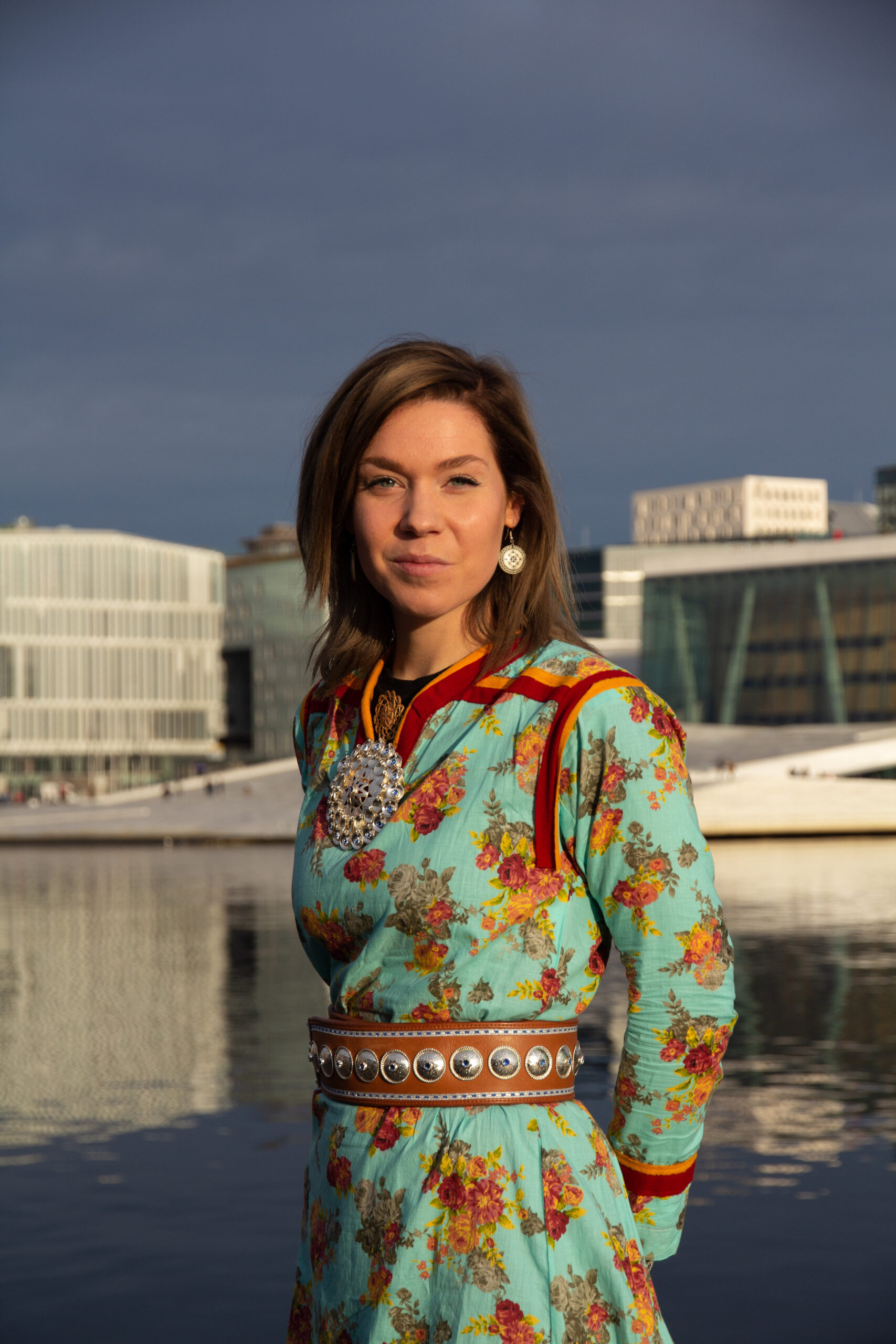Career in Sámi Film
FILM EXČELERATOR SÁPMI offers a tailored program for up to 15 participants who want to develop themselves and work in the Sámi Film Industry. Submissions for 2025 is closed.
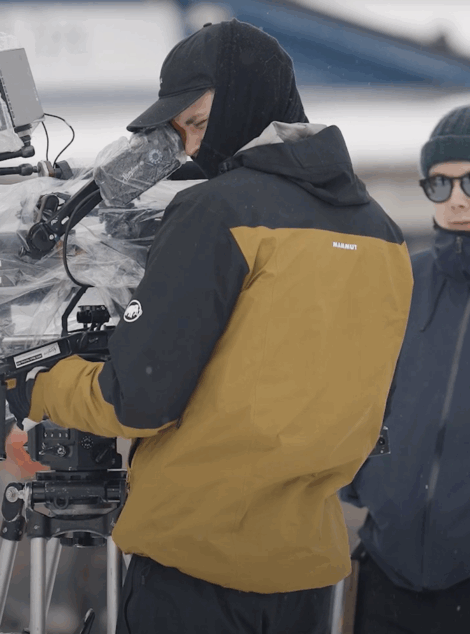
The Sámi film and TV industry is experiencing an explosive interest and growth. To ensure a sustainable and innovative Sámi film industry, ISFI, Talent Norway and SpareBank 1 Nord-Norge are collaborating on the development and talent program FILM EXČELERATOR SÁPMI.
The FILM EXČELERATOR SÁPMI program aims to recruit, train, give practical work experience and inspire our future Sámi film workers in all positions and stages of a film production.
Candidates will be given mentorships, international network opportunities and paid traineeships. Travel, food and lodging is covered for all activities in the program.
What are we looking for?
Your personal motivation and drive to develop your skills in the Sámi film industry is your biggest advantage.
The Sámi film industry needs skilled workers in all areas, like cultural knowledge, costume, set work, duodji and Sámi design, makeup, filming, sound engineering, script, directing, location scouting, post-production, editing programs like Premiere Pro or Final Cut, and more!
If you have experience in another field, we invite you to apply and explore the exciting world of film through this program.
Good to know
FILM EXČELERATOR does not have an age limit.
Speaking or understanding one of the Sámi languages is an advantage, but not a requirement.
The FILM EXČELERATOR program values diversity and encourages all qualified candidates to apply – regardless of gender, age, disability, family situation or country of residence.
Who can apply?
The program is particularly well-suited for two groups:
-
You, who either have education or some practical experience from a TV or film production, and want to further develop yourself. -
You, who have a background or knowledge in other fields, such as art, culture, administrative or other, and want to step into projects in the Sámi film and TV industry.
This is the program
The program begins with a joint start-up workshop in Kautokeino, where you will be introduced to the Sámi film industry and reflect on what it means to be a Sámi film worker, both on and off set.
From there, we will create a tailored individual program for each participant, including:
- Traineeships in Sámi or international productions.
- Mentorship from experienced professionals.
- Workshops and training relevant to your specific field.
- Industry and market events, such as film festivals, both in Sápmi and internationally.
All program-related expenses, such as travel and lodging, are covered during workshops, industry events and traineeships.
Traineeships range from 5 to 30 days, depending on the production and your personal plan.
Participants receive a daily fee of NOK 973 during traineeships, in addition to covered travel, per diem and accommodation.
The program will run from fall 2025 to the end of 2026.

In a film production, a range of roles – from camera and sound to lighting, design, project management, costume, editing, and technical post-production positions – work together.
Depending on the project, from 5 to over 200 people may be involved, helping with the production in different departments.
In general, knowledge and skills from other industries are relevant in the Sámi film industry, and the road to utilising your skills in the film industry is shorter than you think.
The FILM EXČELERATOR program is here to help you develop your skills and passion into a professional role. You are not expected to know the film industry beforehand, or be fully trained as a film industry professional from the start. Mentorships, workshops and traineeships are provided to facilitate your development in, or transition to, the film industry.
For example, if you want to pursue a career within film producing, you will first get theoretical knowledge and a mentor to teach you about the role and its specifics in the film industry, before you go on as a trainee and assist other experienced film producers to get the hands-on knowledge.
Today, many in the Sámi film industry hold several roles or are able to fill different needs during a film production. For example, a writer can also be the director on the same project, a film photographer will also be the editor, or the cultural advisor can also be the location scout. We encourage and facilitate for those who wish to learn and train in several roles during the project.
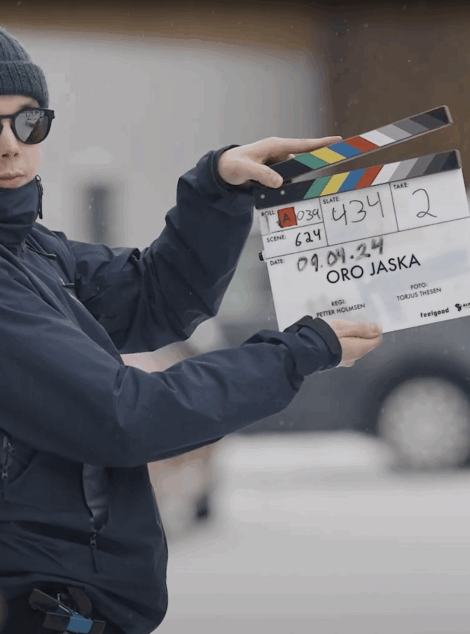
The FILM EXČELERATOR program welcomes applications within these fields and positions:
Screen writer
A screenwriter creates scripts for films, television, or video productions. They develop story ideas, write dialogue, and craft scene descriptions to bring stories to life on screen. A screenwriter usually has a background in creative writing, literature, film studies, or communications. Many have experience in storytelling, scriptwriting, or theatre, and often develop skills through writing courses, workshops, or related education in film and media.
Director
A director oversees the creative vision of a film, guiding actors, crew, and visuals to bring the script to life. They make key decisions on casting, shot composition, and overall storytelling. A movie director typically has a background in film, theater, or visual arts. Many have experience as filmmakers, writers, editors, or cinematographers. Strong storytelling, leadership, and visual communication skills are important.
Producer
A movie producer oversees the production process, managing budgets, hiring key staff, and coordinating logistics to ensure the film is completed on time and within budget. Many movie producers have a background within project management, business, HR/people management, marketing, or cultural positions. Passion, people skills and an ability to oversee production from conception to distribution is important.

Film photographer
A film photographer, or cinematographer, is responsible for capturing the visual elements of a film, including camera work, lighting, and shot composition, to help tell the story visually. If you are pursuing this role, some experience with camera operation or photography, lighting, and visual storytelling is an advantage.
Second camera operator
Second camera operator or assistant who supports the primary camera operator by capturing additional angles or shots, ensuring comprehensive coverage of scenes. If you are pursuing this role, some experience with camera operation or photography, lighting, and visual storytelling is an advantage.
Camera assistant
A camera assistant helps set up, adjust, and maintain camera equipment during filming to ensure smooth operations and proper shot quality. An interest in camera equipment and some prior knowledge is an advantage.

Dramaturg/Script editor
A dramaturg/script editor is an advisor mainly during the script writing process. They provide research, analysis, and contextual insights about the story, characters, and themes to help strengthen the screenplay or production, ensuring the best structure to your script. A dramaturg typically has a background in theater, literature, history, or cultural studies. They often have expertise in research, literature analysis, and storytelling, with experience in drama, film, or theater production.
Script supervisor
A script supervisor monitors the continuity of the film during shooting of a film, ensuring that scenes, actions, and dialogue remain consistent throughout shooting. They also track what has been filmed and note any script changes. A script supervisor typically has a background in film, theater or storytelling, with skills in attention to detail, organization, and continuity management.
Cultural coordinator
A cultural coordinator manages and ensures the respectful and accurate representation of cultures, customs, and traditions. They consult with cultural experts or communities, advise the production team on cultural sensitivities, and help incorporate authentic elements into the film. Their goal is to promote cultural accuracy and avoid misrepresentation or stereotypes. Today, the Sámi film industry works closely with crews from other cultures, and one of the tasks of a cultural coordinator will be to advise, teach and make sure that crew members from outside Sápmi understand cultural codes and conduct while working in Sápmi.

Art director / Production design
An art director is responsible for overseeing the visual style and design of the production, including sets, costumes, and overall look, to ensure it aligns with the director’s vision. An art director typically has a background in fine arts, duodji, set design, interior design, or visual arts. Strong skills in project management and collaboration is an advantage. We especially encourage those with a background within duodji, or general deep knowledge and interest for Sámi traditional clothing and Sámi contemporary fashion and/or architecture, to apply.
Costume designer
A costume designer creates and selects clothing and accessories for characters in a film, helping to define their personalities, time periods, and cultural context. We especially encourage those with a background within duodji, or general deep knowledge and interest for Sámi traditional clothing and Sámi contemporary fashion, to apply.
Intimacy coordinator
An intimacy coordinator is responsible for ensuring scenes involving intimacy, such as romantic or sexual encounters, are performed safely, respectfully, and consensually. They work with actors and the director to establish boundaries, choreograph scenes, and create a comfortable environment, helping to prevent any discomfort or harm during filming.
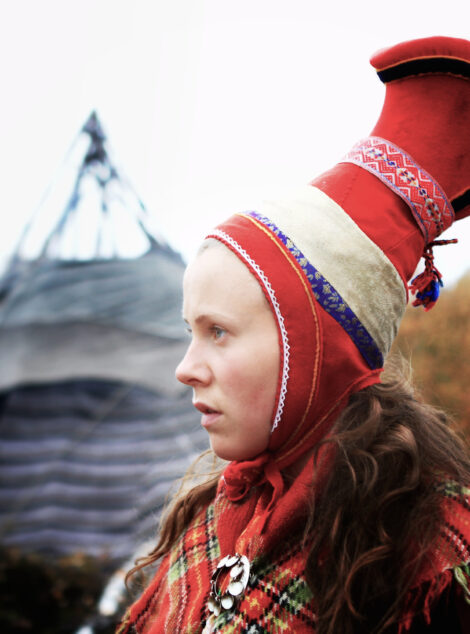
Sound technician
A sound technician for a movie records, edits, and mixes audio, including dialogue, sound effects, and music, to ensure clear and balanced sound quality for the film.
Sound design
A sound designer creates and enhances the audio environment of a film by developing sound effects, ambiance, music and audio elements to support the story and mood.
Light technician
A light technician, also known as a gaffer, is responsible for setting up, adjusting, and maintaining the lighting equipment on a film set. They work closely with the lighting designer and cinematographer to create the desired lighting effects, ensure proper exposure, and maintain safety standards. Their tasks include assembling lighting fixtures, rigging lights, controlling light intensity and color, and troubleshooting technical issues during filming.
Lighting design
A lighting designer in a movie plans and creates the lighting setup for scenes, shaping the mood, atmosphere, and visual tone to support storytelling and enhance the director’s vision. A light designer typically has a background in lighting technology, with an interest in visual storytelling.

Animator
An animator creates moving visuals, such as characters or effects, to bring scenes to life through computer-generated or traditional animation techniques. A film animator typically has a background in art, graphic design, computer animation, or animation technology. Many also have training in illustration, film production, or visual effects, along with skills in software like Maya, Adobe After Effects, or Blender.
VFX artist
A VFX artist creates and integrates visual effects into films, such as explosions, creatures, or digital environments, to enhance or add elements that are difficult or impossible to film practically. A VFX artist typically has a background in computer graphics, visual effects, animation, or related fields such as computer science or digital art. They often have strong skills in software like Adobe After Effects, Nuke, Maya, or Houdini, along with a good understanding of 3D modeling, compositing, and film production processes.
Editor
A film editor assembles and trims raw footage to create a coherent and compelling final version of the movie, shaping the story and pacing. Some knowledge within editing programs like Premier Pro or Final Cut is required.
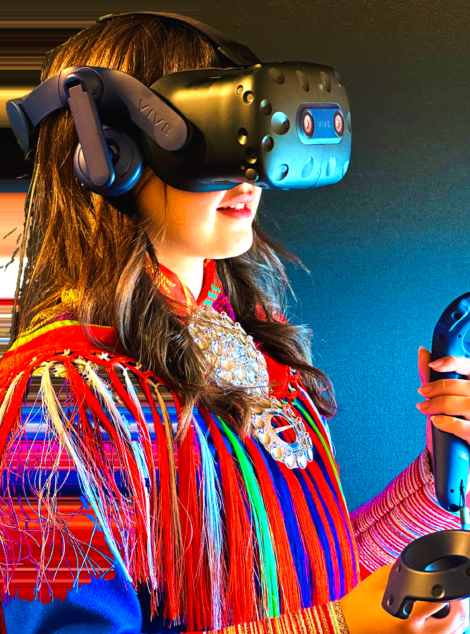
Line producer
A line producer manages the day-to-day production operations, including budgeting, scheduling, and logistics, ensuring the project stays on schedule and within budget. Line producers often have experience in budgeting, scheduling, and managing logistical aspects.
1st assistant director
A 1st assistant director (1st AD) is responsible for scheduling, coordinating, and managing the cast and crew on set to ensure the film production runs smoothly and on time. A 1st assistant director (1st AD) should enjoy scheduling, organizing shoots, and managing on-set logistics. Leadership, coordination, and communication skills are important in this role.
2nd assistant director/production coordinator
A 2nd assistant director (2nd AD), also referred to as a production coordinator, handles logistical and administrative tasks, such as scheduling, communication, and coordinating details to ensure the smooth operation of the film production. This position is usually the right hand of the 1st assistant director, and is used in bigger productions with a large number of people involved.
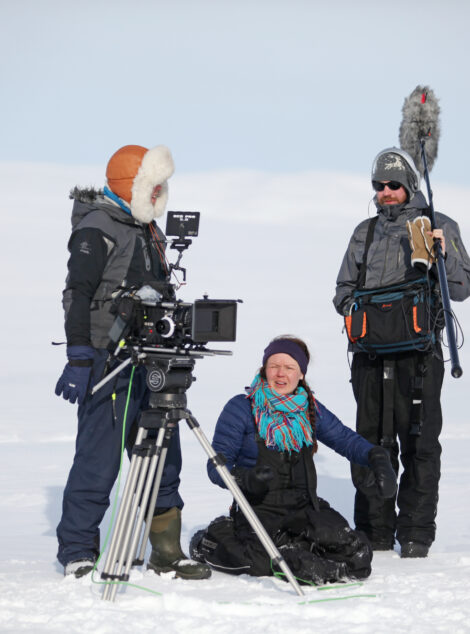
Location scout
A location scout searches for and secures suitable outdoor or indoor locations for filming, considering factors like aesthetics, logistics, and permissions. General knowledge about areas in Sápmi, driver licence for car and snowmobile is an advantage.
Casting director
A casting director is responsible for finding and selecting actors for roles in a film, organizing auditions, and recommending suitable talent to the director and producers. A casting director typically has a background in theater, acting, film, or talent management. They often have experience in auditioning, talent scouting, and industry networking, with strong communication and interpersonal skills.
Makeup artist
A makeup artist in a film is responsible for applying makeup to actors to enhance their appearance, create special effects, or transform them into specific characters. Their tasks include regular makeup, aging makeup, prosthetics, and special effects makeup for scenes requiring monsters, injuries, or fantastical elements. They work closely with the director and costume designers to ensure the makeup aligns with the character and story.

FILM EXČELERATOR is funded by


CONTACT
International Sámi Film Institute
BuletjávriN-9520 Guovdageaidnu
Norway
Org. nr
909819498759
